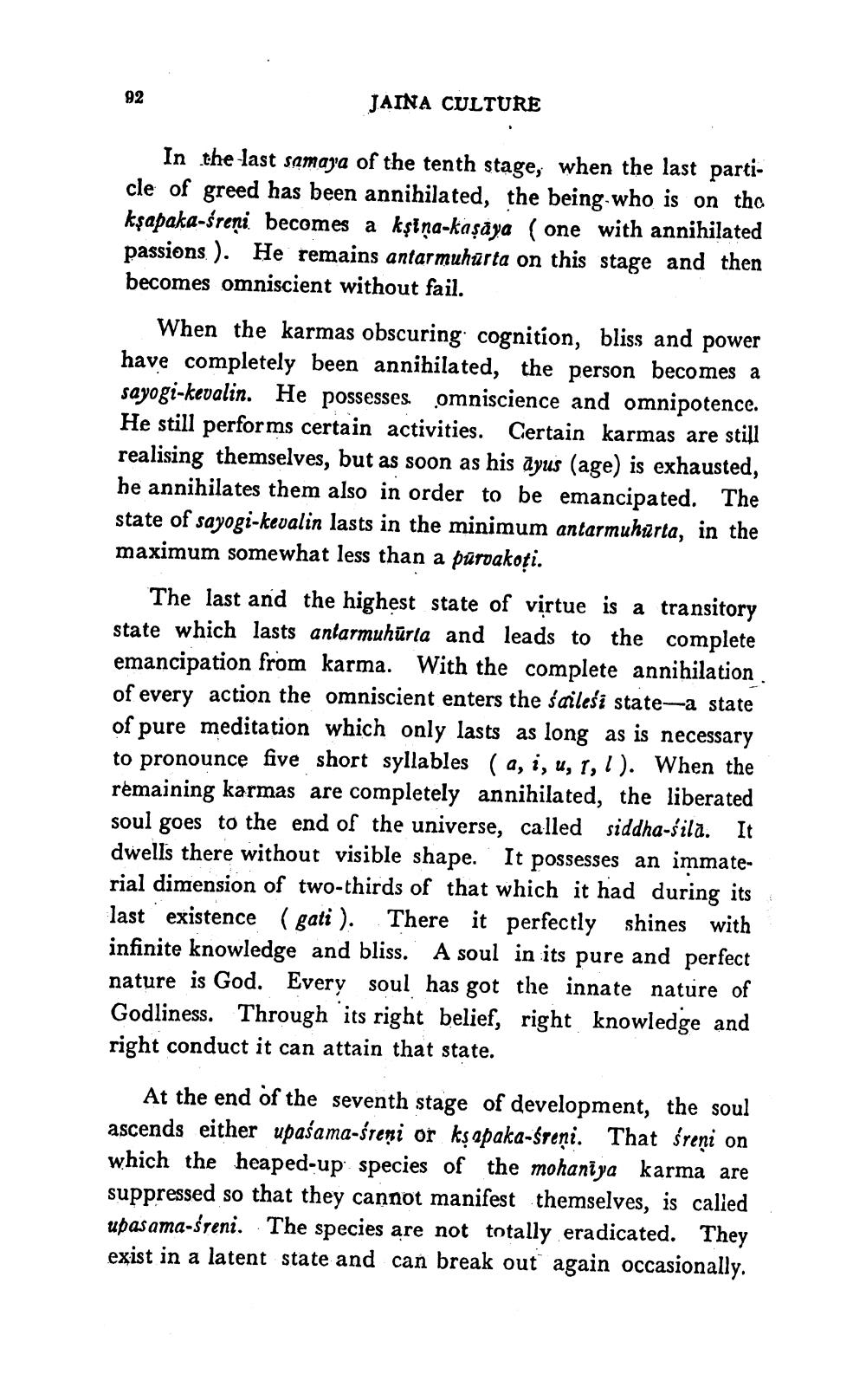________________
92
JAINA CULTURE
In the last samaya of the tenth stage, when the last particle of greed has been annihilated, the being who is on the kşapaka-śreņi becomes a kşına-kaşaya ( one with annihilated passions.). He remains antarmuhürta on this stage and then becomes omniscient without fail.
When the karmas obscuring cognition, bliss and power have completely been annihilated, the person becomes a sayogi-kevalin. He possesses. omniscience and omnipotence. He still performs certain activities. Certain karmas are still realising themselves, but as soon as his dyus (age) is exhausted, he annihilates them also in order to be emancipated. The state of sayogi-kevalin lasts in the minimum antarmuhurta, in the maximum somewhat less than a pūroakoți.
The last and the highest state of virtue is a transitory state which lasts antarmuhūrla and leads to the complete emancipation from karma. With the complete annihilation of every action the omniscient enters the saileši state-a state of pure meditation which only lasts as long as is necessary to pronounce five short syllables ( a, i, u,1,1). When the remaining karmas are completely annihilated, the liberated soul goes to the end of the universe, called siddha-bila. It dwells there without visible shape. It possesses an immaterial dimension of two-thirds of that which it had during its last existence (gati ). There it perfectly shines with infinite knowledge and bliss.' A soul in its pure and perfect nature is God. Every soul has got the innate nature of Godliness. Through its right belief, right knowledge and right conduct it can attain that state.
At the end of the seventh stage of development, the soul ascends either upašama-śreni or ksapaka-śreni. That śreni on which the heaped-up species of the mohaniya karma are suppressed so that they cannot manifest themselves, is called upas ama-śreni. The species are not totally eradicated. They exist in a latent state and can break out again occasionally.




